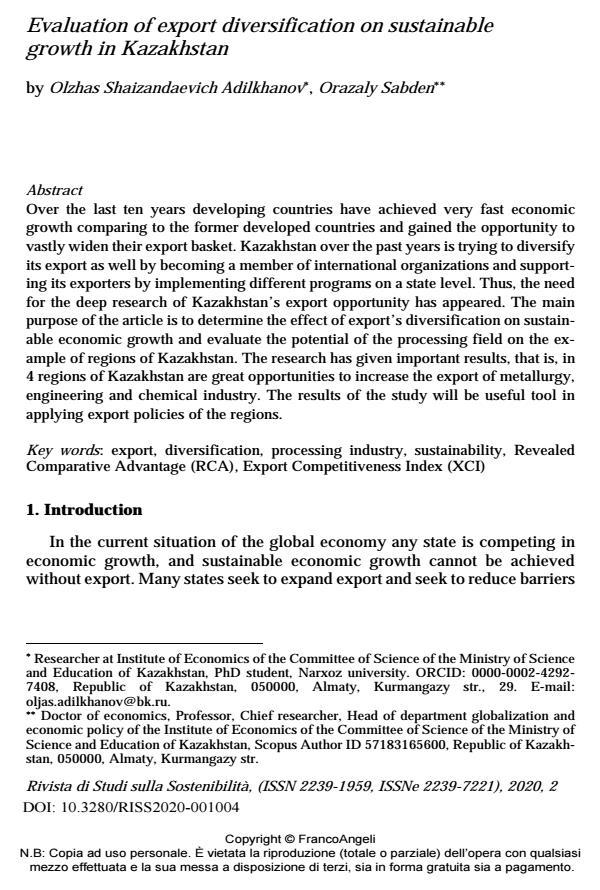Evaluation of export diversification on sustainable growth in Kazakhstan
Journal title RIVISTA DI STUDI SULLA SOSTENIBILITA'
Author/s Olzhas Shaizandaevich Adilkhanov, Orazaly Sabden
Publishing Year 2021 Issue 2020/2
Language English Pages 15 P. 49-63 File size 166 KB
DOI 10.3280/RISS2020-002004
DOI is like a bar code for intellectual property: to have more infomation
click here
Below, you can see the article first page
If you want to buy this article in PDF format, you can do it, following the instructions to buy download credits

FrancoAngeli is member of Publishers International Linking Association, Inc (PILA), a not-for-profit association which run the CrossRef service enabling links to and from online scholarly content.
Over the last ten years developing countries have achieved very fast economic growth comparing to the former developed countries and gained the opportunity to vastly widen their export basket. Kazakhstan over the past years is trying to diversify its export as well by becoming a member of international organizations and supporting its exporters by implementing different programs on a state level. Thus, the need for the deep research of Kazakhstan’s export opportunity has appeared. The main purpose of the article is to determine the effect of export’s diversification on sustainable economic growth and evaluate the potential of the processing field on the example of regions of Kazakhstan. The research has given important results, that is, in 4 regions of Kazakhstan are great opportunities to increase the export of metallurgy, engineering and chemical industry. The results of the study will be useful tool in applying export policies of the regions.
Keywords: Export, diversification, processing industry, sustainability, Revealed Comparative Advantage (RCA), Export Competitiveness Index (XCI)
- Formation of highly intelligent capital at the expense of government spending: Economic effect for Kazakhstan Dana Kangalakova, Olzhas Adilkhanov, Dinara Mukhiyayeva, Sharbanu Turdalina, Zaira Satpayeva, in Knowledge and Performance Management /2025 pp.54
DOI: 10.21511/kpm.09(2).2025.05
Olzhas Shaizandaevich Adilkhanov, Orazaly Sabden, Evaluation of export diversification on sustainable growth in Kazakhstan in "RIVISTA DI STUDI SULLA SOSTENIBILITA'" 2/2020, pp 49-63, DOI: 10.3280/RISS2020-002004